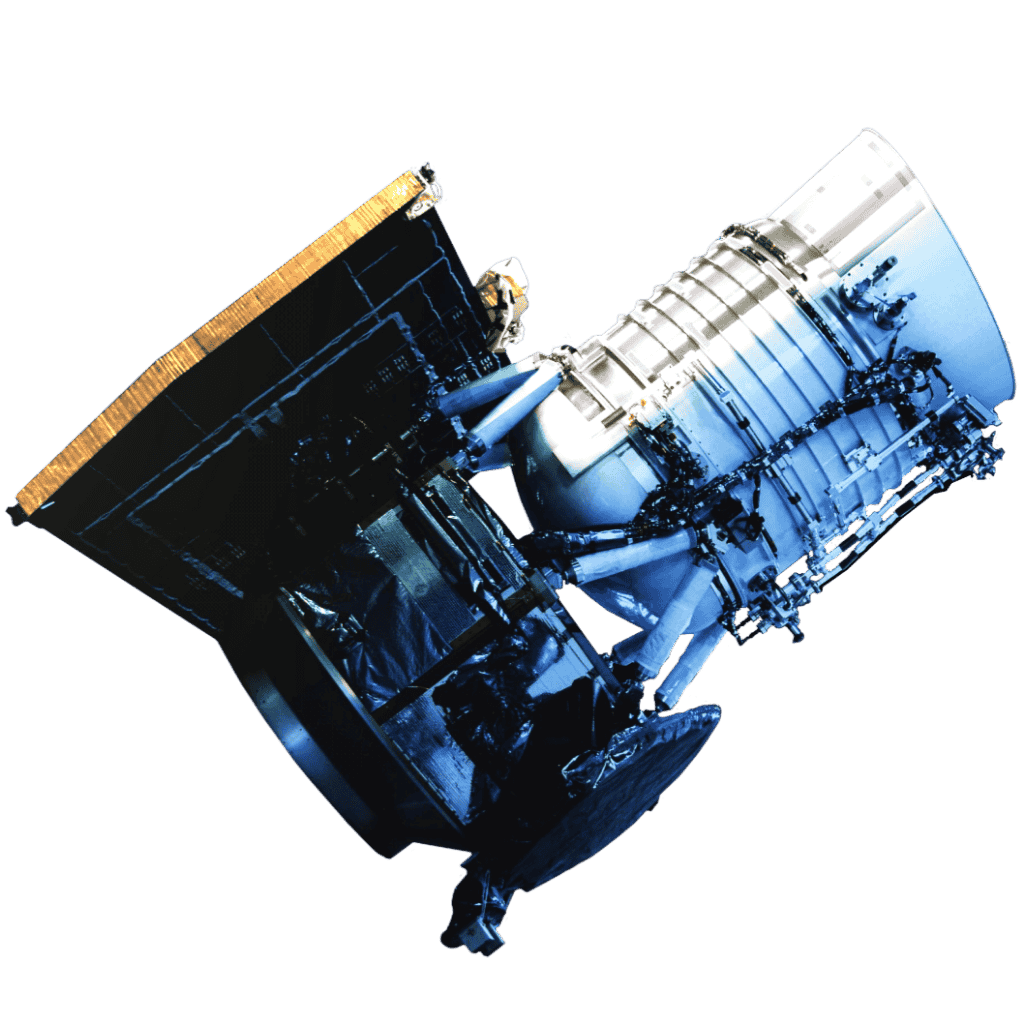NEOWISE Telescope
Asteroid Tracker
Infrared telescope detecting near-Earth objects

USPs
- Tracks asteroids and comets for planetary defense
- Repurposed from WISE mission for NEO surveys
- Measures size, composition, and orbits of NEOs
- Infrared detection enables discovery of dark, hard-to-see objects
- Provides rapid public data releases for global research
- Supports NASA’s planetary defense strategy
Major Milestones
- 2013-12-13: Reactivated as NEOWISE after a hibernation period, shifting focus to detect and track near-Earth objects (NEOs) using its infrared capabilities.
- 2014-03: Completed its initial survey phase, identifying over 1,000 near-Earth objects, including potentially hazardous asteroids.
- 2014-10: Discovered its first near-Earth asteroid, 2014 AA, showcasing its ability to detect objects in infrared wavelengths.
- 2016-01: Released its first data set, providing the astronomical community with positions and orbits of over 7,000 solar system objects.
- 2018-03: Detected Comet C/2016 U1 (NEOWISE), a bright comet visible to the naked eye, marking a significant public engagement milestone.
- 2020-03: Completed its prime mission phase, having cataloged over 34,000 solar system objects, including more than 3,000 NEOs.
- 2020-07: Observed Comet NEOWISE (C/2020 F3), a spectacular comet that became a highlight of the year and boosted public interest.
- 2022-02: Extended its mission for an additional four years, continuing to monitor NEOs and support planetary defense efforts.
- 2024-06: Reached a milestone of tracking over 44,000 solar system objects, enhancing the catalog of known NEOs.
- 2025-07-17: Celebrates over 11 years since reactivation, contributing to ongoing NEO monitoring and planetary defense as its mission nears its end.
Cosmic Portrait
NEOWISE: Guarding Earth from Asteroids
NEOWISE, the reactivated phase of NASA’s original Wide-field Infrared Survey Explorer (WISE), was launched in 2009 and repurposed in 2013 to specifically detect and track near-Earth objects (NEOs) such as asteroids and comets. Operating in infrared wavelengths, NEOWISE continues to be one of the most vital tools for planetary defense, offering unique insights into the size, composition, and orbits of space rocks that pass near our planet.
- Mission and Focus: While the original WISE mission aimed at mapping the entire sky in infrared to uncover galaxies, brown dwarfs, and distant stars, its transformation into NEOWISE gave it a sharp new purpose: to become a celestial sentinel. Its primary objective is to identify, track, and characterize potentially hazardous asteroids and comets that could pose a risk to Earth. NEOWISE scans the skies for heat signatures emitted by these objects, making it especially effective at detecting dark, low-albedo asteroids that optical telescopes often miss.
- Orbit and Observation Strategy: NEOWISE orbits in a sun-synchronous polar orbit at roughly 525 kilometers altitude, enabling it to survey the entire sky every six months. From this vantage point in low Earth orbit, it operates with a consistent lighting angle, allowing precise thermal readings of moving celestial bodies. Its consistent scanning and observation pattern ensure no quadrant of the sky is left unchecked, maximizing the likelihood of early NEO detection.
- Scientific and Planetary Defense Contributions: Since its revival, NEOWISE has discovered thousands of new asteroids and comets, including numerous potentially hazardous asteroids (PHAs). By measuring an object’s infrared light, NEOWISE can estimate not only its size but also infer composition and surface properties. This is essential for determining the potential impact severity of a discovered object. As of 2025, the telescope remains a cornerstone of NASA’s Planetary Defense Coordination Office (PDCO), helping maintain a comprehensive and growing catalog of known NEOs.
Ongoing Impact and Relevance
In 2025, NEOWISE is still fully operational and continues to feed researchers with critical data for assessing asteroid threat levels. Its findings directly influence mission planning for both robotic and human exploration, especially for asteroid redirection missions and Earth protection strategies. The data collected is freely available through NASA’s database, empowering scientists around the world to conduct follow-up studies and orbit refinement.
NEOWISE also plays a key role in public safety. By identifying potential impactors well in advance, it gives humanity the lead time required to take protective measures—whether by deflection technologies, evacuation plans, or further investigation via spacecraft missions. It serves as the early warning system in our planetary defense network.
Alongside missions like DART and future efforts to build the NEO Surveyor spacecraft, NEOWISE helps complete a multi-tiered defense strategy that combines detection, tracking, and impact mitigation. Its legacy will be felt not only in the scientific data it provides, but in the lives potentially saved by its vigilant watch.
NEOWISE is Earth’s sentinel, watching the skies for cosmic threats.
In a universe where asteroid impacts are inevitable on long timescales, NEOWISE stands as a proactive guardian—quietly scanning the heavens, identifying hidden dangers, and ensuring Earth is prepared for whatever space may throw our way.
Fun Fact
NEOWISE has cataloged over 43,000 near-Earth objects!